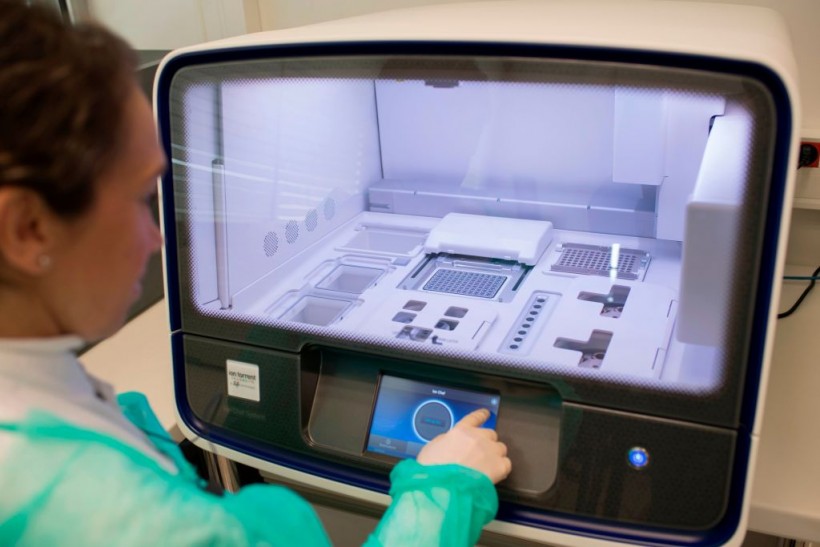Researchers from Heidelberg University and the University of Arkansas for Medical Sciences have suggested that the cellular pathologies in genetic disorders like Down syndrome, which are brought on by the presence of an extra chromosome, depend less on which specific chromosome is duplicated and more on the presence of an extra chromosomal copy. This alternate strategy might lead to fresh insights into the causes of Down syndrome.
On December 1, 2022, a work review appeared in the American Journal of Human Genetics.

Laboratory Engineer Marthe Tsochandaridis checks the results of blood samples on the laboratory automat, at the North Hospital (Hospital Nord), in Marseille, southern France, on March 28, 2018, as part of a screening of trisomies, including the trisomy 21, known as the Down syndrome, conducted on pregnant women.
About Down Syndrome
According to DownSyndrome.org, down syndrome develops throughout pregnancy. Children with Down syndrome are born to parents of varied ages and socioeconomic backgrounds.
There are trillions of cells in each human. Each cell has a little unit called a chromosome. Our chromosomes' DNA controls how we grow and develop. In most humans, each of their cells has 23 pairs of chromosomes (46 in total). The cells of people with Down syndrome contain 47 chromosomes. Trisomy 21 is another name for Down syndrome, a condition in which a person has an extra copy of chromosome 21.
There is currently no cure for genetic disorders brought on by chromosomal increases. It is crucial to pinpoint the cause of the defects exhibited in cells containing additional chromosomes to find therapeutic targets. Until now, most research on autosomal trisomies has been on the detrimental effects of the additional chromosomal copy's increased expression of certain genes.
An alternate strategy would be to analyze the cellular properties and functional effects of various chromosomal trisomies and look for patterns. To highlight many characteristics common to different trisomies, the researchers in the current study compared the molecular effects of trisomy syndromes in vivo to created cell lines bearing different additional chromosomes in vitro. According to the researchers, regardless of the identification of the specific chromosomes, the existence of an additional chromosome and, extrapolating from this, the increased expression of genes on the extra chromosome may be the causes of these pathological symptoms.
Cell Culture Models that Trigger Immune Response
According to Generic Engineering and Biotechnology News, the researchers discovered that trisomic people and cell culture models both trigger the innate immune response. In earlier research, interferon signaling was shown to be elevated in patients with Down syndrome. As a general result of chromosomal gain, the researchers concluded that their data "point toward elevated IFN signaling and subsequent hyperactivation of autoimmune and inflammatory responses."
On the basis of genetic, epigenetic, and protein alterations, earlier investigations have found immunological disturbances and increased autoimmunity in people with trisomic genetic disorders. In the current study, the researchers found that people with trisomy 21 had an overactive innate immune system and an undeveloped adaptive T-cell immune system.
According to transcriptome comparisons, the scientists concluded that immune system dysregulation might be caused by chromosome 21 trisomy and a chromosomal increase in general.
The results of this study provide evidence that the symptoms seen in people with Down syndrome are a result of both aberrant gene expression on chromosome 21 and a general cellular response to aneuploidy.
RELATED ARTICLE: Cells in Down Syndrome Cases Have Senescence-Like Mechanism That Could Be Targeted for Future Treatment
Check out more news and information on Cells in Science Times.














